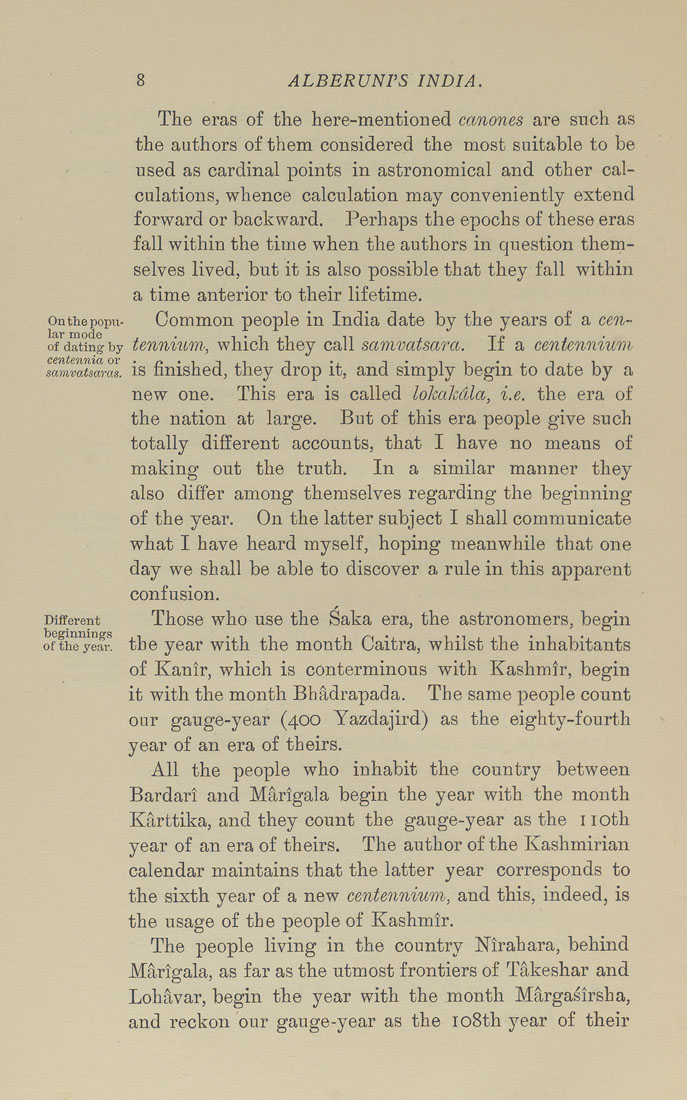8 ALBERUNTS INDIA.
The eras of the here-mentioned canones are such as
the authors of them considered the most suitable to be
used as cardinal points in astronomical and other cal¬
culations, whence calculation may conveniently extend
forward or backward. Perhaps the epochs of these eras
fall within the time when the authors in question them¬
selves lived, but it is also possible that they fall within
a time anterior to their lifetime,
onthepopu- Common people in India date by the years of a cen-
of dating by temiium., which they call samvatsara. If a centennium
samvatsaras. IS fanished, they drop it, and simply begin to date by a
new one. This era is called lokakdla, i.e. the era of
the nation at large. But of this era people give such
totally different accounts, that I have no means of
making out the truth. In a similar manner they
also differ among themselves regarding the beginning
of the year. On the latter subject I shall communicate
what I have heard myself, hoping meanwhile that one
day we shall be able to discover a rule in this apparent
confusion.
Different Thosc who usc the Saka era, the astronomers, begin
of the year, the year with the month Caitra, whilst the inhabitants
of Kanir, which is conterminous with Kashmir, begin
it with the month Bhadrapada. The same people count
our gauge-year (400 Yazdajird) as the eighty-fourth
year of an era of theirs.
All the people who inhabit the country between
Bardari and Marigala begin the year with the month
Karttika, and they count the gauge-year as the iioth
year of an era of theirs. The author of the Kashmirian
calendar maintains that the latter year corresponds to
the sixth year of a new centennium, and this, indeed, is
the usage of the people of Kashmir.
The people living in the country Nlrahara, behind
Marigala, as far as the utmost frontiers of Takeshar and
Lohavar, begin the year with the month Margasirsha,
and reckon our gauge-year as the io8th year of their
|








